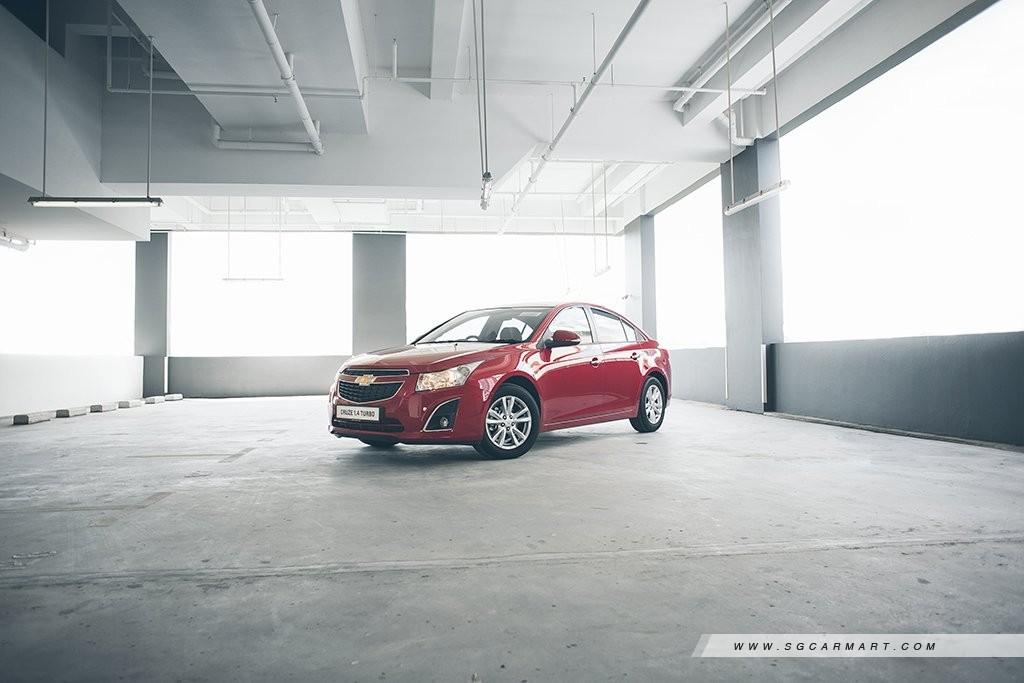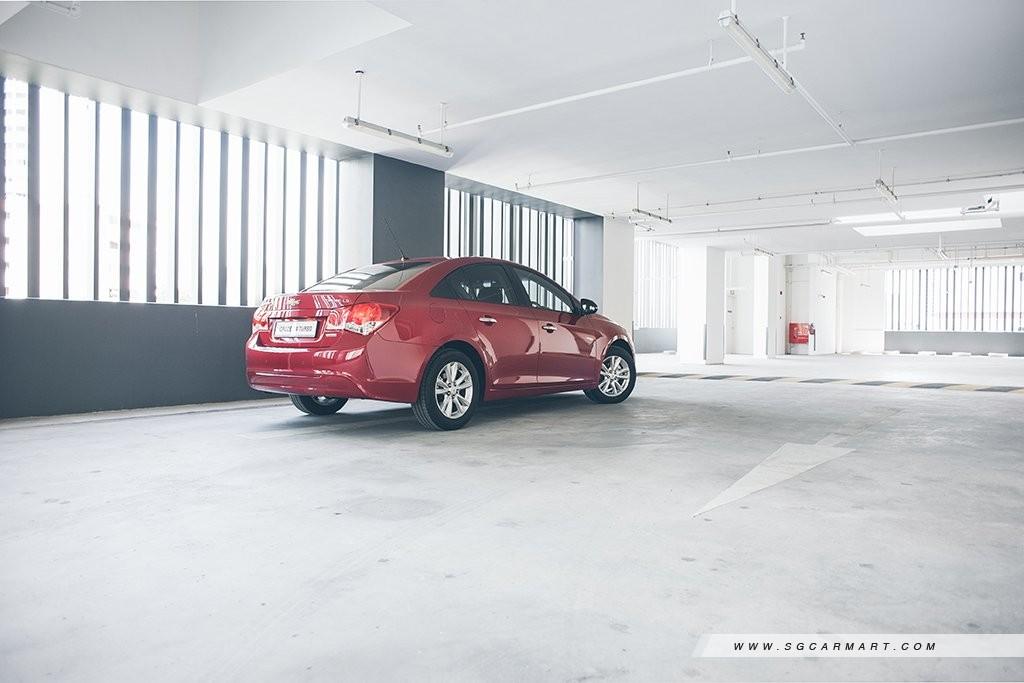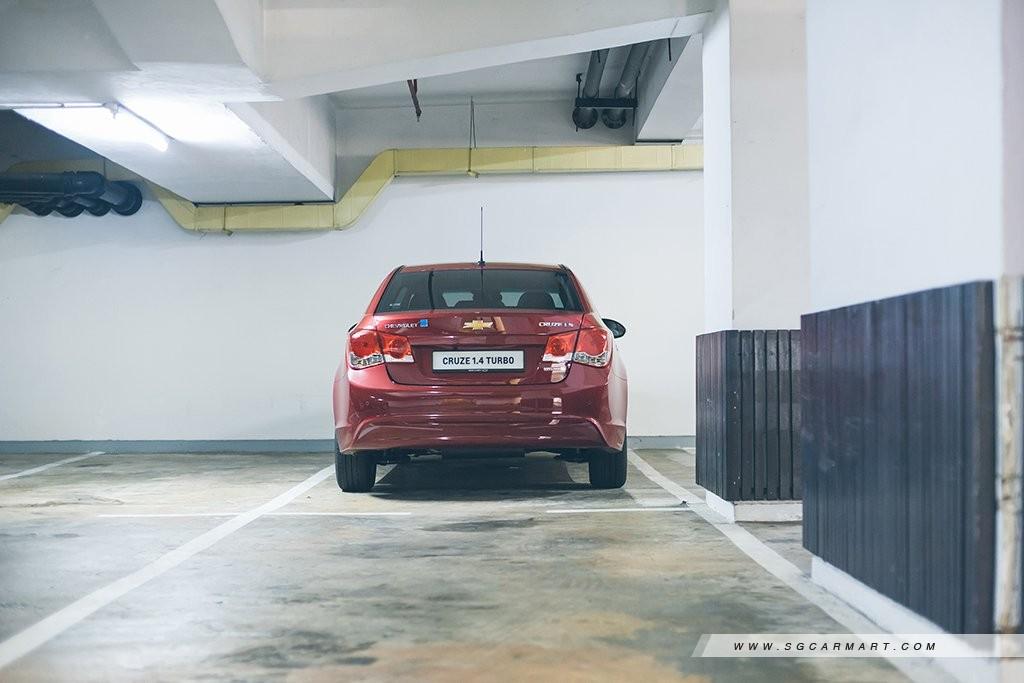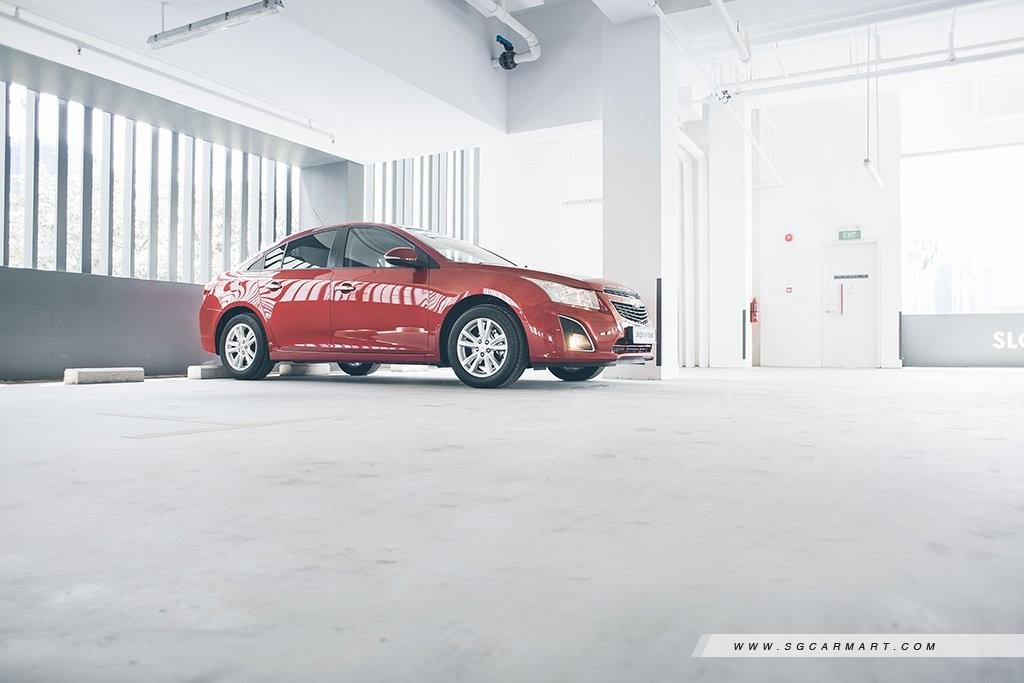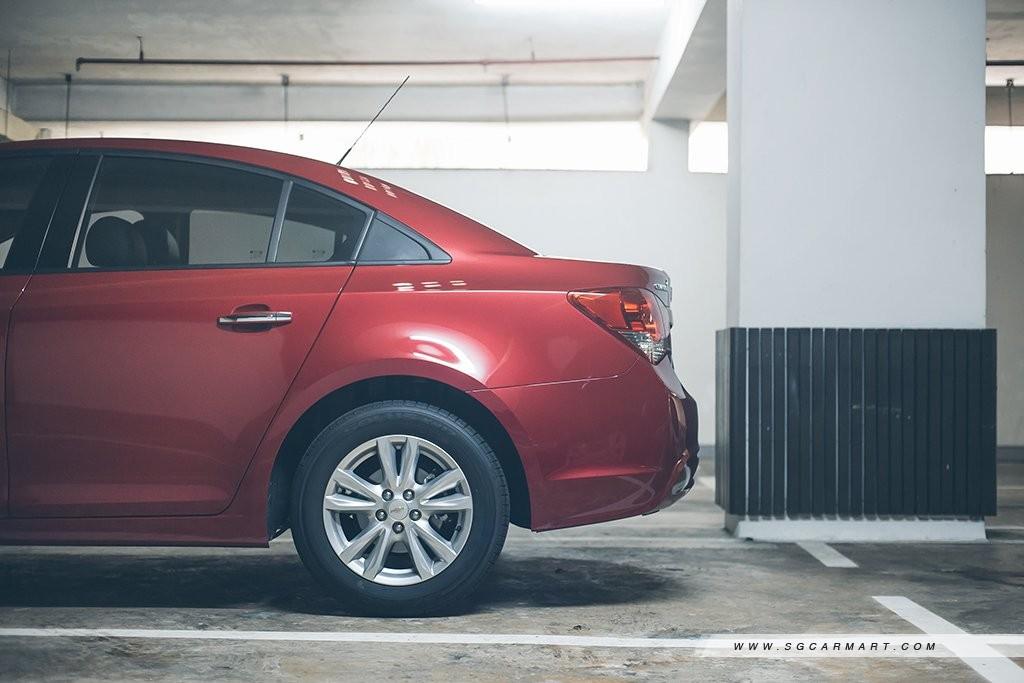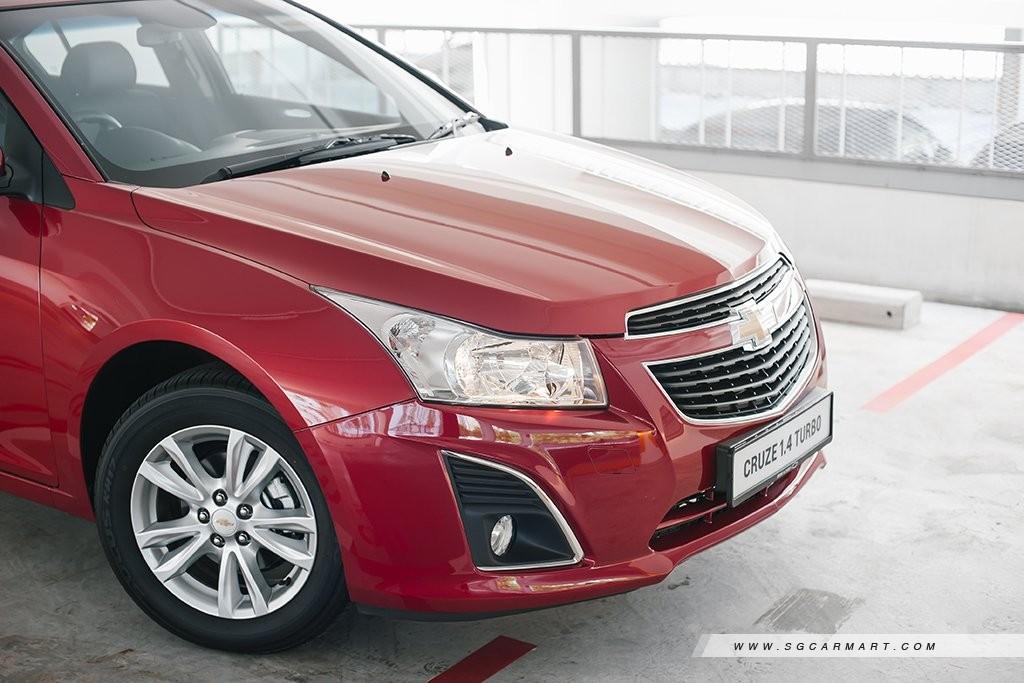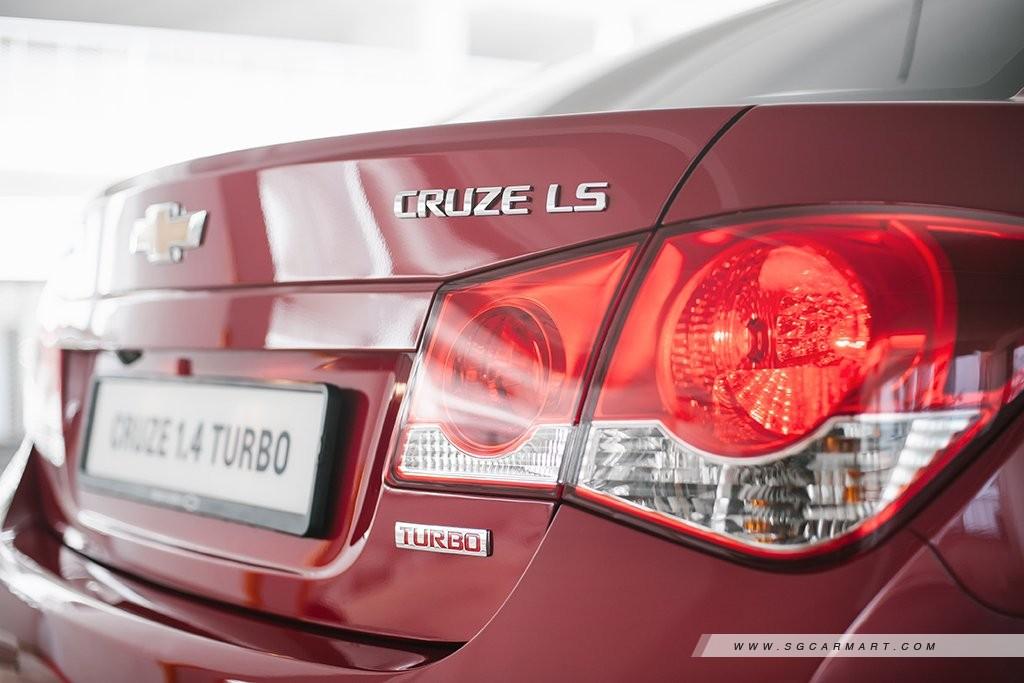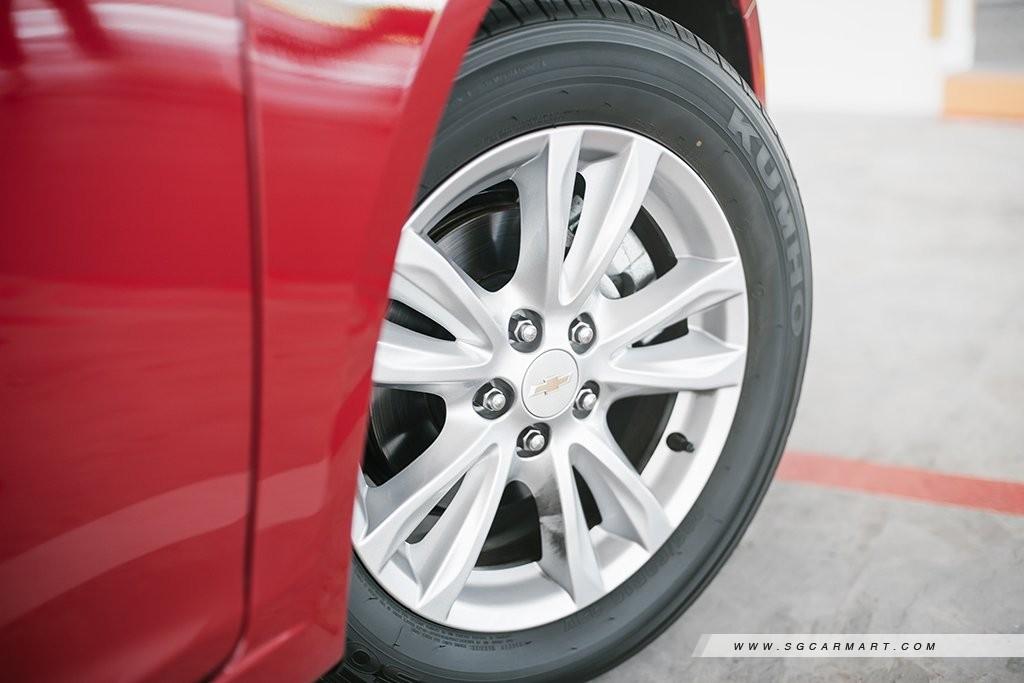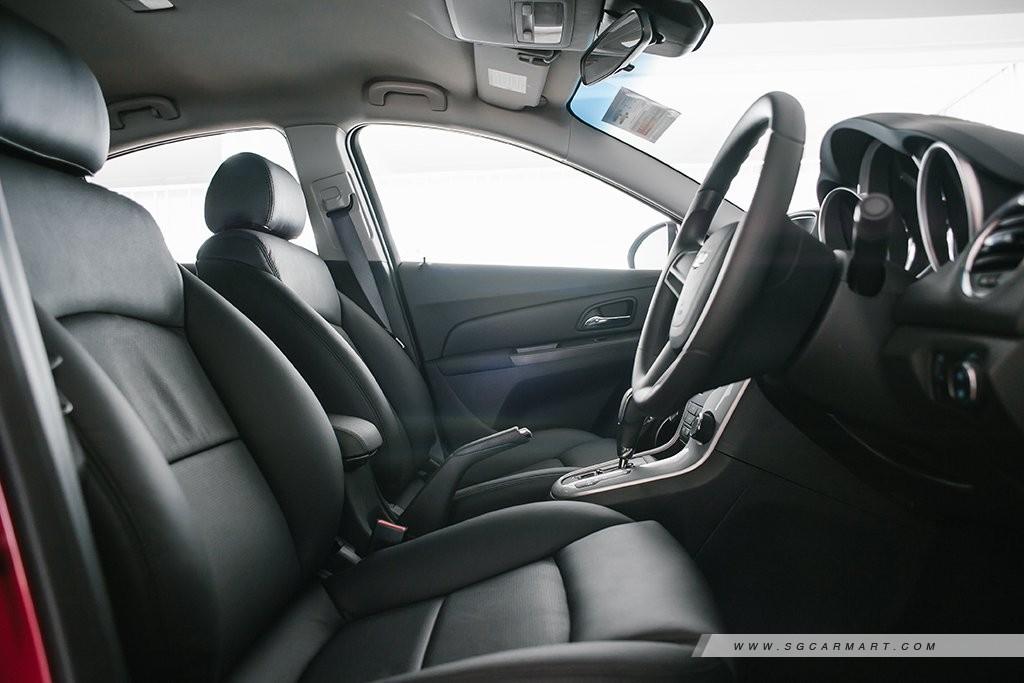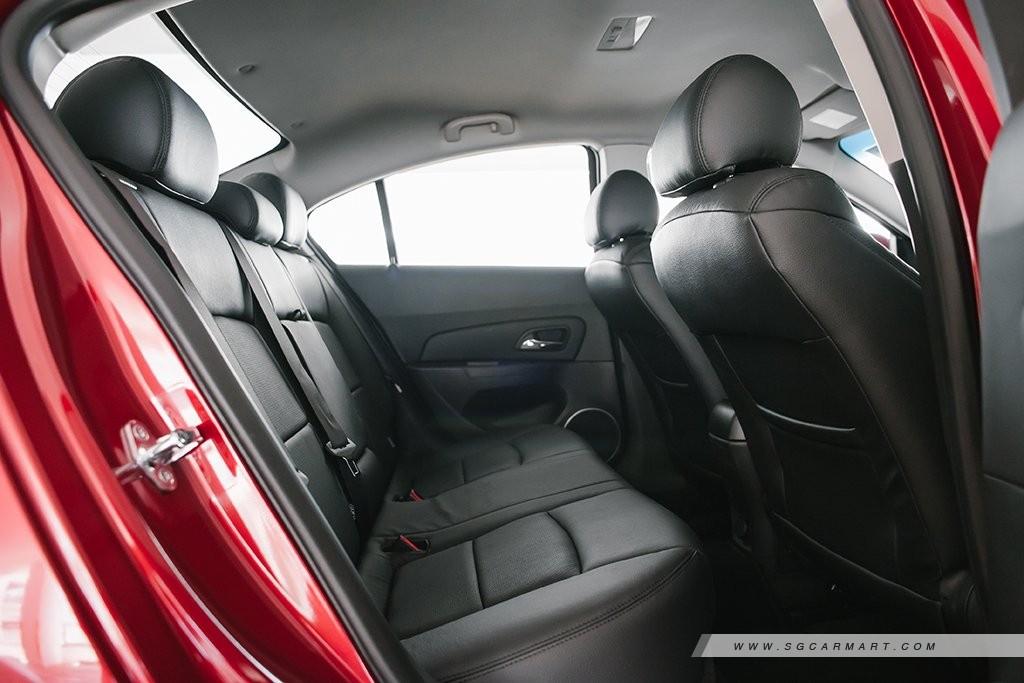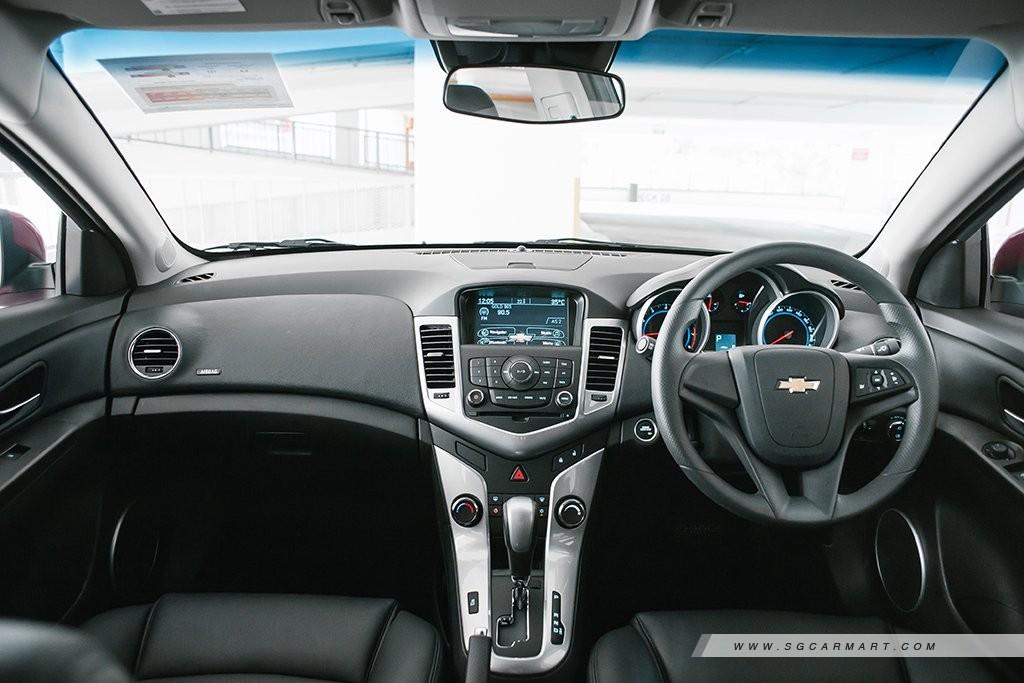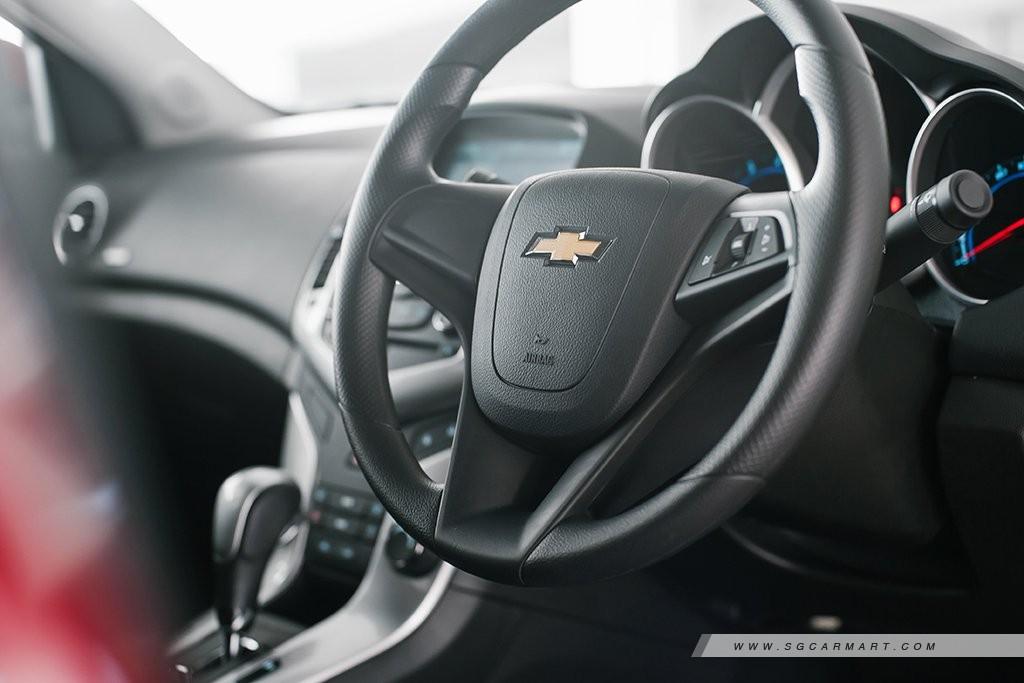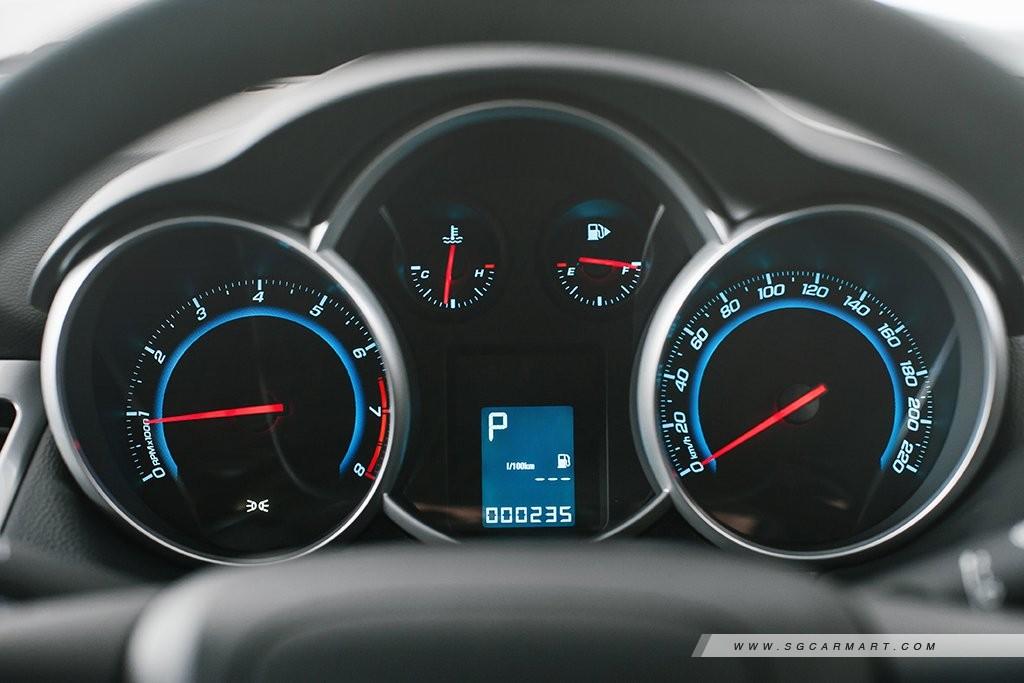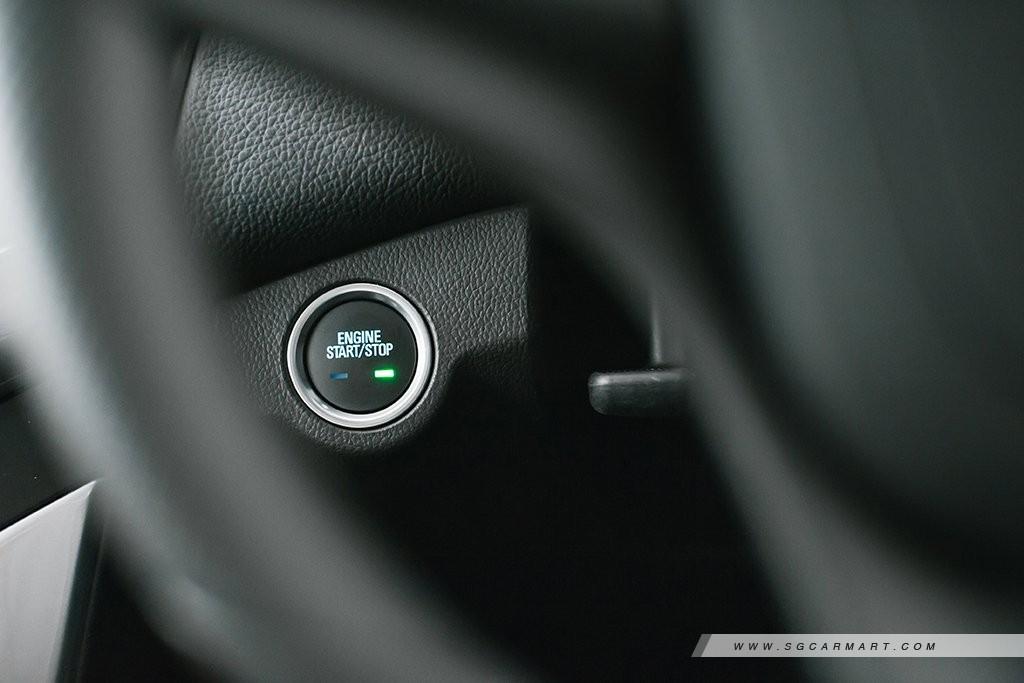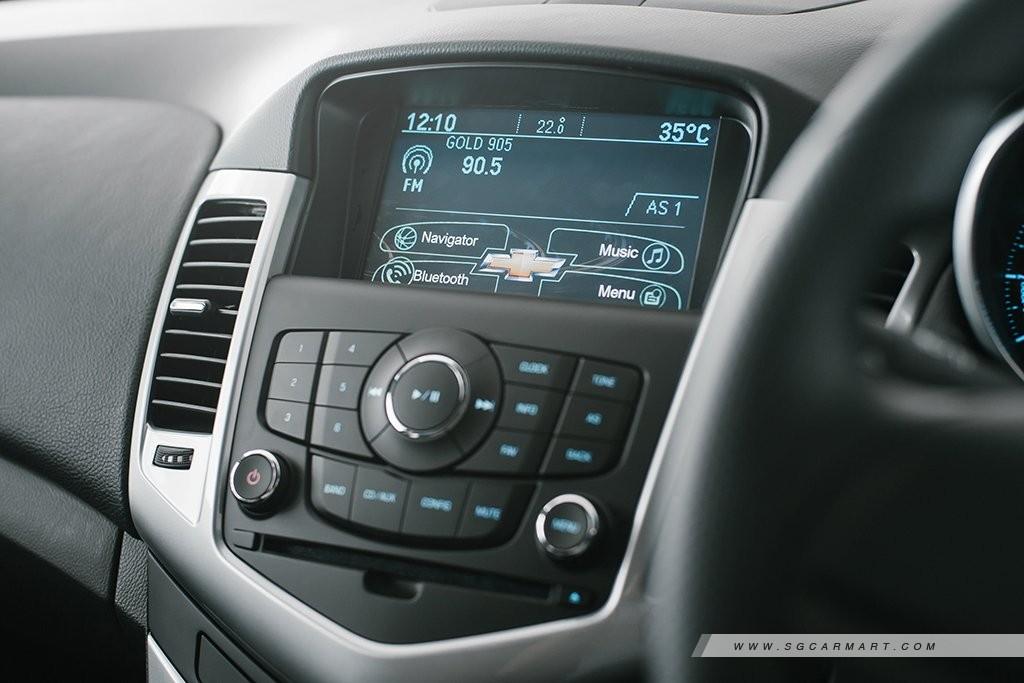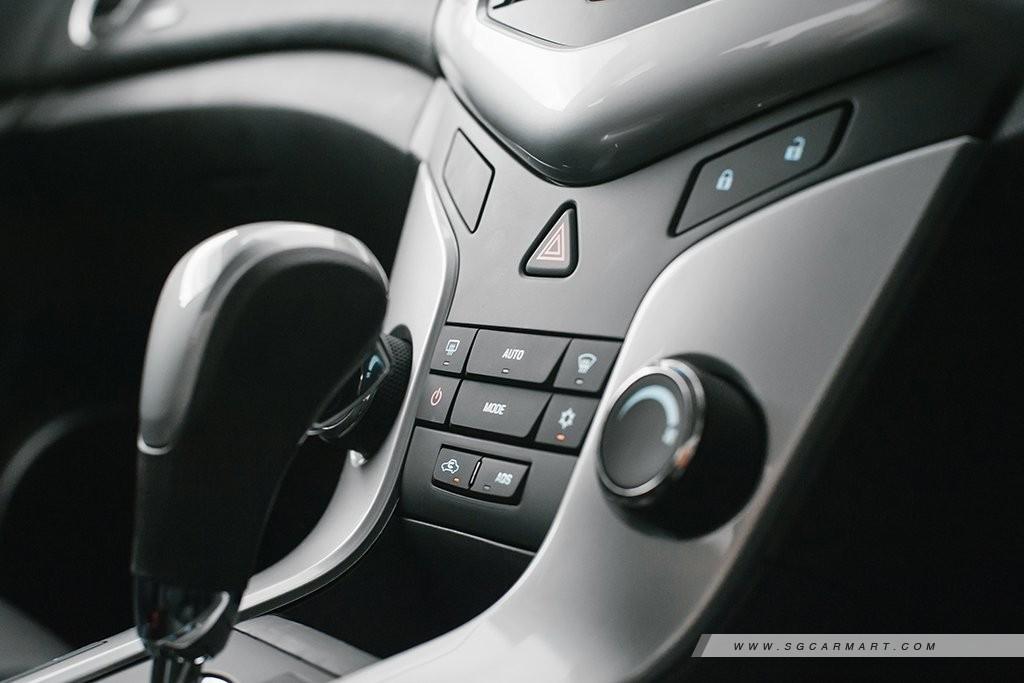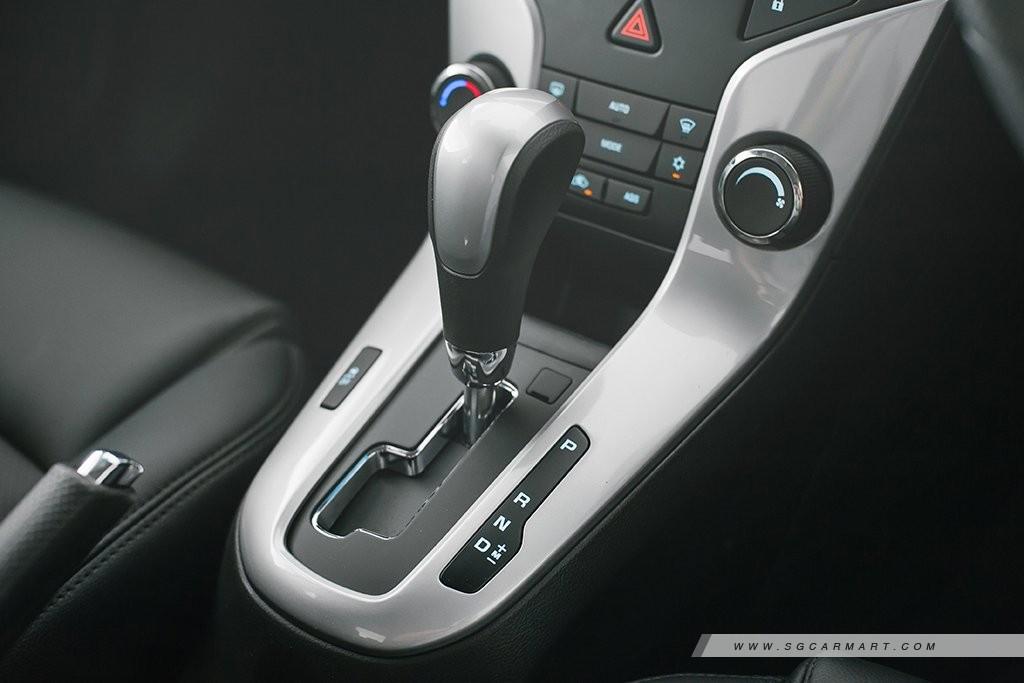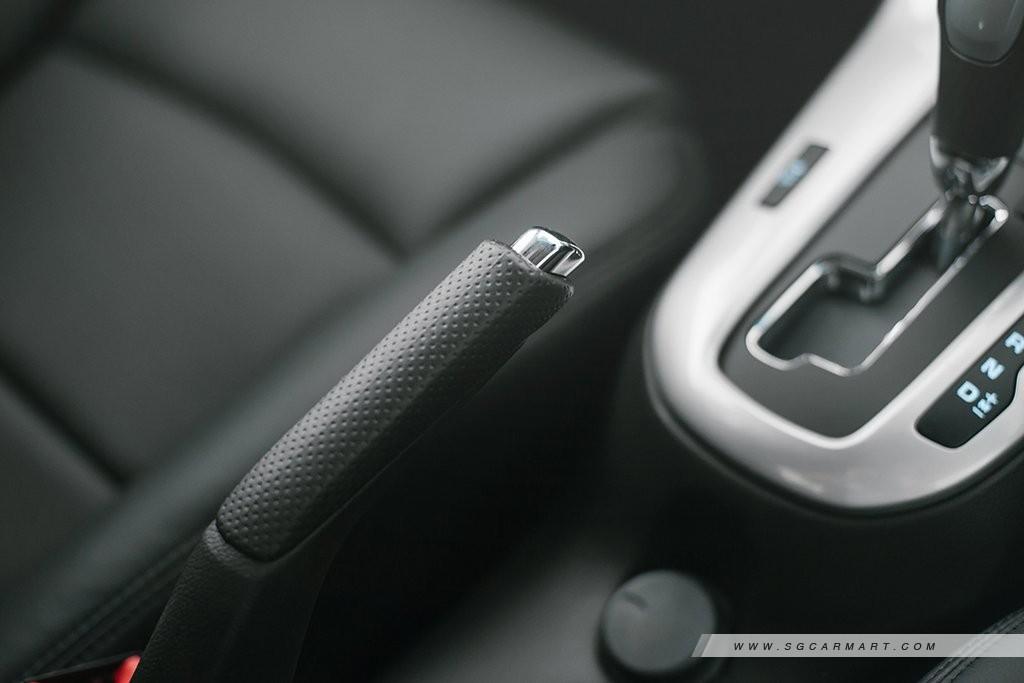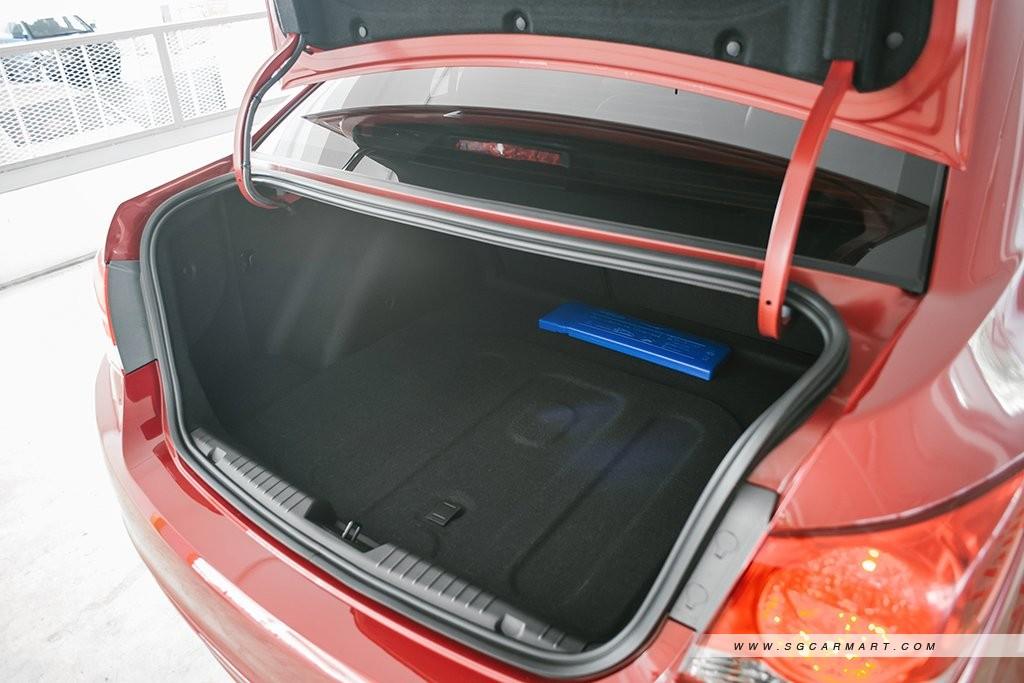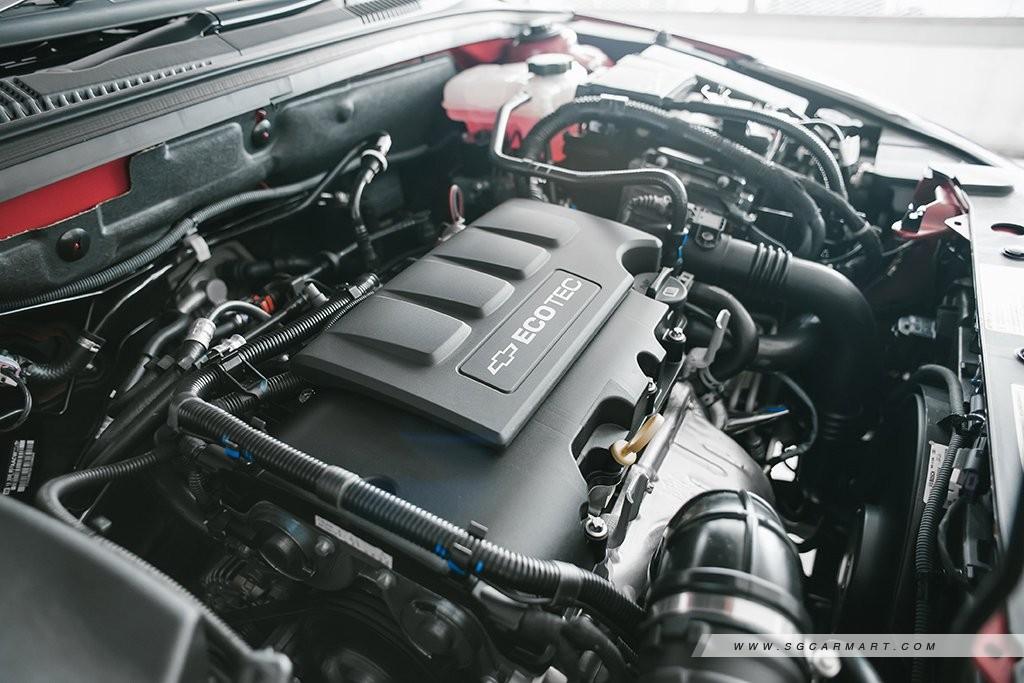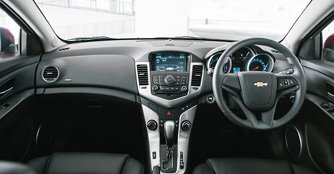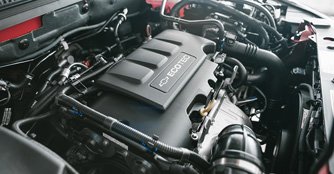Chevrolet Cruze 1.4 Turbo (A) Facelift Review
02 Dec 2013|38,078 views
Introduced in 2009, the Cruze has made Chevrolet a brand to consider once more in the mid-sized sedan market. The overall refinement, efficiency and packaging of the Cruze has made it a serious rival for the bevy of mid-sized sedans, such as the Honda Civic, Nissan Sylphy, Toyota Corolla Altis and Volkswagen Jetta, that have dominated the segment for a while.
The Chevrolet Cruze we have here is worlds apart from its predecessor, but you'd struggle to tell the difference. That's because the improvements to the car is largely under the skin.
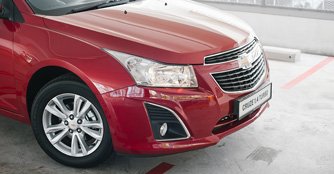
 The whole nose is much smoother and more cohesive, following on from the look set by the Malibu and newer Chevrolet models
The whole nose is much smoother and more cohesive, following on from the look set by the Malibu and newer Chevrolet models
We are talking about the new 1.4-litre turbocharged engine under that bonnet. Of course, the main question is whether that is enough to keep up against its Japanese and Korean competitors.
Up close and Personal
At 4,603mm by 1,797mm by 1,477mm (L x W x H), the Cruze's dimensions hasn't changed and it is still one of the larger cars in its segment.
Get up closer to the car and you will notice that it has received an updated front fascia, with redesigned air vents around the fog lamps and an updated grille.
The Chevrolet Cruze we have here is worlds apart from its predecessor, but you'd struggle to tell the difference. That's because the improvements to the car is largely under the skin.

We are talking about the new 1.4-litre turbocharged engine under that bonnet. Of course, the main question is whether that is enough to keep up against its Japanese and Korean competitors.
Up close and Personal
At 4,603mm by 1,797mm by 1,477mm (L x W x H), the Cruze's dimensions hasn't changed and it is still one of the larger cars in its segment.
Get up closer to the car and you will notice that it has received an updated front fascia, with redesigned air vents around the fog lamps and an updated grille.
 |
Otherwise, the Cruze is pretty much the same handsome, chunky car from before, with its bold front end and aggressive flared sides, giving it a somewhat muscular stance.
Keyless access on all four doors now (driver and front passenger side before only) allows for more convenient entry.
Moving on inside, the gauges and controls within its unique twin-cockpit design exude refinement. Interior materials feel solid to the touch, and the optional two-tone colour schemes are upscale in appearance.
Dimensions of its predecessor are retained inside and passenger space is ample in both rows. There's plenty of legroom up front and an adequate amount in the rear. In the same way as before, a generous cargo space of 450 litres will easily haul groceries or occasional luggage.
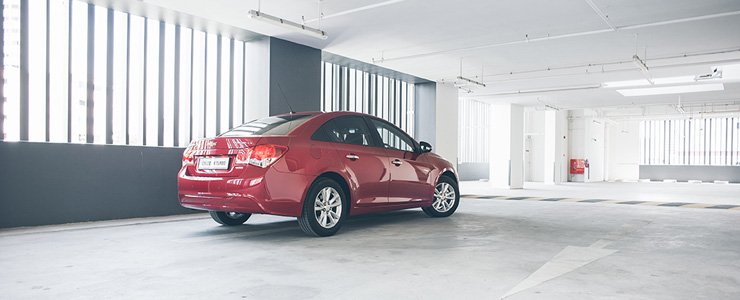 |
The Drive
The biggest change here is the engine. Replacing the 1.6-litre naturally aspirated engine in its predecessor is a new 1.4-litre turbocharged powerplant, mated to a six-speed automatic gearbox.
On the roads, there's sufficient performance from the powerplant while tall gearing from the transmission gives it a relaxed feel. Overtaking also proves to be less of a difficulty as before thanks to added power and torque.
Credit also goes to the lag-free and smooth gearshifts, which allow the Cruze to go from 0 to 100km/h in 10.4 seconds. This is an impressive 2.1 seconds faster than the 1.6-litre model.
Refinement is also excellent, with little engine/road noise during the time we spent with the car.
As a result of the smaller displacement, the car sips less fuel. Compared to its predecessor's claimed figure of 13.5km/L, the 1.4-litre Cruze is slated to do 14.7km/L, though we only managed 12.7km/L without driving in an 'eco-friendly' way.
Steering is quite responsive, though it still lacks feedback and weight. Nonetheless, it works well with the suspension, which is tweaked to absorb bumps and ruts comfortably.
Conclusion
Just like the rest of the carmakers, Chevrolet is also embracing the 'turbocharged' phase. As such, the Chevrolet Cruze is now better, faster and more fuel efficient, making it a solid choice in its segment.
The only downside is that the car will belong to COE Category B from February 2014 onwards. Thus, now may just be a good time to consider the car.
Introduced in 2009, the Cruze has made Chevrolet a brand to consider once more in the mid-sized sedan market. The overall refinement, efficiency and packaging of the Cruze has made it a serious rival for the bevy of mid-sized sedans, such as the Honda Civic, Nissan Sylphy, Toyota Corolla Altis and Volkswagen Jetta, that have dominated the segment for a while.
The Chevrolet Cruze we have here is worlds apart from its predecessor, but you'd struggle to tell the difference. That's because the improvements to the car is largely under the skin.
We are talking about the new 1.4-litre turbocharged engine under that bonnet. Of course, the main question is whether that is enough to keep up against its Japanese and Korean competitors.
Up close and Personal
At 4,603mm by 1,797mm by 1,477mm (L x W x H), the Cruze's dimensions hasn't changed and it is still one of the larger cars in its segment.
Get up closer to the car and you will notice that it has received an updated front fascia, with redesigned air vents around the fog lamps and an updated grille.
The Chevrolet Cruze we have here is worlds apart from its predecessor, but you'd struggle to tell the difference. That's because the improvements to the car is largely under the skin.
We are talking about the new 1.4-litre turbocharged engine under that bonnet. Of course, the main question is whether that is enough to keep up against its Japanese and Korean competitors.
Up close and Personal
At 4,603mm by 1,797mm by 1,477mm (L x W x H), the Cruze's dimensions hasn't changed and it is still one of the larger cars in its segment.
Get up closer to the car and you will notice that it has received an updated front fascia, with redesigned air vents around the fog lamps and an updated grille.
Otherwise, the Cruze is pretty much the same handsome, chunky car from before, with its bold front end and aggressive flared sides, giving it a somewhat muscular stance.
Keyless access on all four doors now (driver and front passenger side before only) allows for more convenient entry.
Moving on inside, the gauges and controls within its unique twin-cockpit design exude refinement. Interior materials feel solid to the touch, and the optional two-tone colour schemes are upscale in appearance.
Dimensions of its predecessor are retained inside and passenger space is ample in both rows. There's plenty of legroom up front and an adequate amount in the rear. In the same way as before, a generous cargo space of 450 litres will easily haul groceries or occasional luggage.
The Drive
The biggest change here is the engine. Replacing the 1.6-litre naturally aspirated engine in its predecessor is a new 1.4-litre turbocharged powerplant, mated to a six-speed automatic gearbox.
On the roads, there's sufficient performance from the powerplant while tall gearing from the transmission gives it a relaxed feel. Overtaking also proves to be less of a difficulty as before thanks to added power and torque.
Credit also goes to the lag-free and smooth gearshifts, which allow the Cruze to go from 0 to 100km/h in 10.4 seconds. This is an impressive 2.1 seconds faster than the 1.6-litre model.
Refinement is also excellent, with little engine/road noise during the time we spent with the car.
As a result of the smaller displacement, the car sips less fuel. Compared to its predecessor's claimed figure of 13.5km/L, the 1.4-litre Cruze is slated to do 14.7km/L, though we only managed 12.7km/L without driving in an 'eco-friendly' way.
The biggest change here is the engine. Replacing the 1.6-litre naturally aspirated engine in its predecessor is a new 1.4-litre turbocharged powerplant, mated to a six-speed automatic gearbox.
On the roads, there's sufficient performance from the powerplant while tall gearing from the transmission gives it a relaxed feel. Overtaking also proves to be less of a difficulty as before thanks to added power and torque.
Credit also goes to the lag-free and smooth gearshifts, which allow the Cruze to go from 0 to 100km/h in 10.4 seconds. This is an impressive 2.1 seconds faster than the 1.6-litre model.
Refinement is also excellent, with little engine/road noise during the time we spent with the car.
As a result of the smaller displacement, the car sips less fuel. Compared to its predecessor's claimed figure of 13.5km/L, the 1.4-litre Cruze is slated to do 14.7km/L, though we only managed 12.7km/L without driving in an 'eco-friendly' way.
Steering is quite responsive, though it still lacks feedback and weight. Nonetheless, it works well with the suspension, which is tweaked to absorb bumps and ruts comfortably.
Conclusion
Just like the rest of the carmakers, Chevrolet is also embracing the 'turbocharged' phase. As such, the Chevrolet Cruze is now better, faster and more fuel efficient, making it a solid choice in its segment.
The only downside is that the car will belong to COE Category B from February 2014 onwards. Thus, now may just be a good time to consider the car.
Also read our comparison article on:
Chevrolet Cruze 1.6 vs Hyundai Elantra 1.6 vs Nissan Sylphy 1.6Car Information
Chevrolet Cruze 1.4 Turbo (A)
CAT B|Petrol|14.7km/L
Horsepower
103kW (138 bhp)
Torque
200 Nm
Acceleration
10.4sec (0-100km /hr)
This model is no longer being sold by local distributor
All Used Chevrolet CruzeThank You For Your Subscription.
